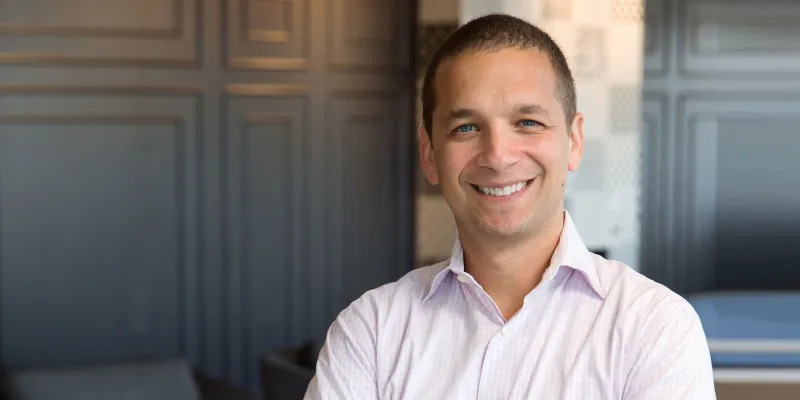How LinkedIn’s Dan Roth roped in Barack Obama and Mitt Romney to jumpstart their content platform
LinkedIn has grown from a professional network to a content platform. Daniel (Dan) Roth, Editor-in-chief, LinkedIn, traces the journey.

It was the year 2011 and Barack Obama had begun campaigning for his second term as the President of the United States. He was contesting against Mitt Romney, the Republican candidate.
While the US wondered who the next president would be, Daniel Roth, Editor-in-chief, LinkedIn, was looking to build LinkedIn’s content publishing platform. He wanted to rope in both Obama and Romney as ‘influencers’ on the new publishing platform that LinkedIn had launched. Dan wanted them to be two of the top 150 first influencers.
Starting from 0 to 150
Fourteen years of existence, a market cap of $18.23 billion, and an acquisition by Microsoft for $196 per share in an all-cash transaction valued at $26.2 billion in June last year — LinkedIn today is one of the world’s largest professional networks, and as of June last year, it had over 433 million people on it.
Today, it has the top influencers from across the globe – Prime Minister Narendra Modi, Priyanka Chopra and Arianna Huffington to name a few. Starting with 150 last year, LinkedIn now has over 752 influencers on its platform.
In 2011, Dan Roth was working with Ryan Roslansky for building the LinkedIn publishing platform, when the idea of getting top 150 influencers came to him. It meant pitching the idea to every influencer in the US and several phone calls.
Sitting in LinkedIn’s plush Bengaluru office, Dan traces LinkedIn’s journey from a curation platform to a content publishing platform. “Jeff (Weiner), CEO of LinkedIn, wrote to me and said that LinkedIn was looking at content. Initially, I was sceptical, but the more I thought about it, the more sense it made to me,” says Dan.
Dan had worked as a business editor for Wired, Forbes, and Fortune. He had his first meeting with Jeff to understand if they could work on some APIs that they were working on at Fortune. Later, that email from Jeff got him thinking. Dan explains that in the decade of being a journalist, he had seen the decline of the print media. This was what led to his shift towards digital media.
Time to move shop to the main street
Dan realised that while Fortune had journalists to do the research and put the best content out, trying to get professionals to come and read the content was a challenge.
So, in 2011, the team started with LinkedIn Today — a content curation platform. “Earlier, in Fortune, it was like we were operating a great boutique but on a side lane. While LinkedIn had the same professionals we were hunting for, the change felt like moving to the main street,” explains Dan. If some article was trending for accountants, the team would ensure that all accountants would read it.
“I thought why not put in an editorial filter. Editors have the ability to give readers the kind of information and content they don’t even realise they need to know. So, while the algorithms worked at getting the content, the editorial team helped break the filter bubble,” explains Dan.
Sharper focus on content
User-generated content (UGC) is getting bigger than people ever imagined. In April last year, the number of user-generated book reviews on Goodreads was at 50 million. Wikipedia, one of the earliest forms of UGC, has over 2.36 million users worldwide.
Medium, another UGC platform, has raised close to $124 million funds and even opened its subscription service to all writers earlier this month. Medium has over 60 million monthly readers, and as of last year, 7.5 million posts were published on the platform.
Dan remarks that LinkedIn has the ability to focus on the user’s world. And the data on what the members liked to read and see helped Dan and his fledgling team curate the right content. However, six months down the lane, Dan felt that he couldn’t keep on doing the same thing.
Regarding this, Jeff said to him — “If you’re doing the same thing after six months, you are obviously doing something wrong. You need to figure how to build and scale this platform.” Soon, Ryan who already a part of LinkedIn moved on to become the Product Head for Content at LinkedIn. This helped further propel LinkedIn's content publishing platform. Around 2011-12, the team had also acquired LinkedIn Pulse, and by October 2011, they launched the publishing platform.
“We knew that people had great ideas and if we could get professionals to put out what they were thinking, and why they were thinking those thoughts, others could read, and even get better opportunities. LinkedIn, up until that point, told you where you had worked and what your skills were but not what you thought. Once you start writing and sharing, people can also look at the way you’re thinking. Writing your thoughts today is the new resume,” says Dan.
Dan knew that he had to ensure that once people started writing they would want the world to read it. Therefore, starting the platform for small segments or geographies was out of the question. The team decided to begin with the influencers.
Picking from his old life
“It would ensure control of the content. For the first time, we were opening up the platform for anyone to write, so we wanted to make sure it would be populated with the right kind of professional and business content,” explains Dan.

The team had targeted both Obama and Romney, who were then contesting elections. Dan reminisces that initially both were unsure, but once Obama committed, Romney joined in too. Explaining his task, Dan says,
“My job was to get these 150 people on board and that is when I realised how handy my reporting skills would be. I had to call over 200 people, convince them to write, and tell them why their views were important. That is what you do when you need to write a story — you talk to several people, pitch them your story idea, and let them know why is it important for them to put their views out there.”
Once the influencers were onboarded, the team opened up the ‘Follow’ button where everyone could follow the influencers, comment on their articles, and like them. People soon started sharing the articles and making them more popular.
Removing the middleman
“When you talk to 100 people for a story, you possibly end up quoting five; here all 100 had the ability to put their voice out. Essentially, LinkedIn now removed the middleman, and gave everyone a voice and an easy access,” highlights Dan. And by the end of 2012, the team opened up the platform for everyone.
“It’s all based on the idea that people have something really important to say,” explains Dan. Today, LinkedIn is venturing to expand the content reach to include videos. Also, since UGC is a difficult animal to manage, Dan adds that because LinkedIn is a professional network, the number of spam cases are limited. People would just unfollow and stop engaging.
“The way content grows on LinkedIn is through the engagement it has. If you end up writing junk, nobody engages with it and it simply dies,” says Dan. Also, the team reads the content. While it claims not to edit any content, Dan adds that it does give feedback to the authors and keeps encouraging them.
Present across the globe, Dan explains how LinkedIn works for different geographies. In US, Brazil and India, LinkedIn puts out the kind of content that is raw and aspirational. Germany, on the other hand, works on a more streamlined format — the team is in fact looking at different content formats that could work in Germany.
Dan says, “Unlike in my previous professional life, the content here doesn’t have to be perfect. In fact, the rawer it is, the better it typically does. Sharper the edges, more the number of people who connect to it. Also, the more you know, the better the content does.”







